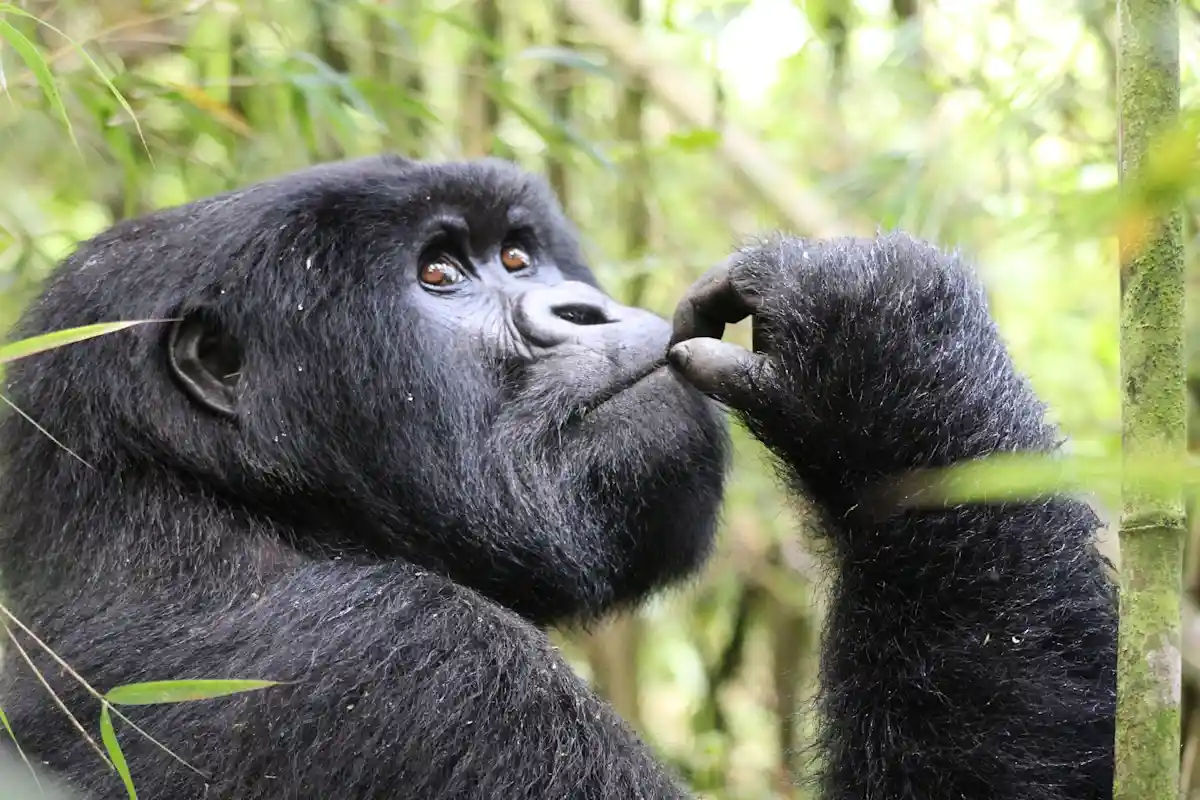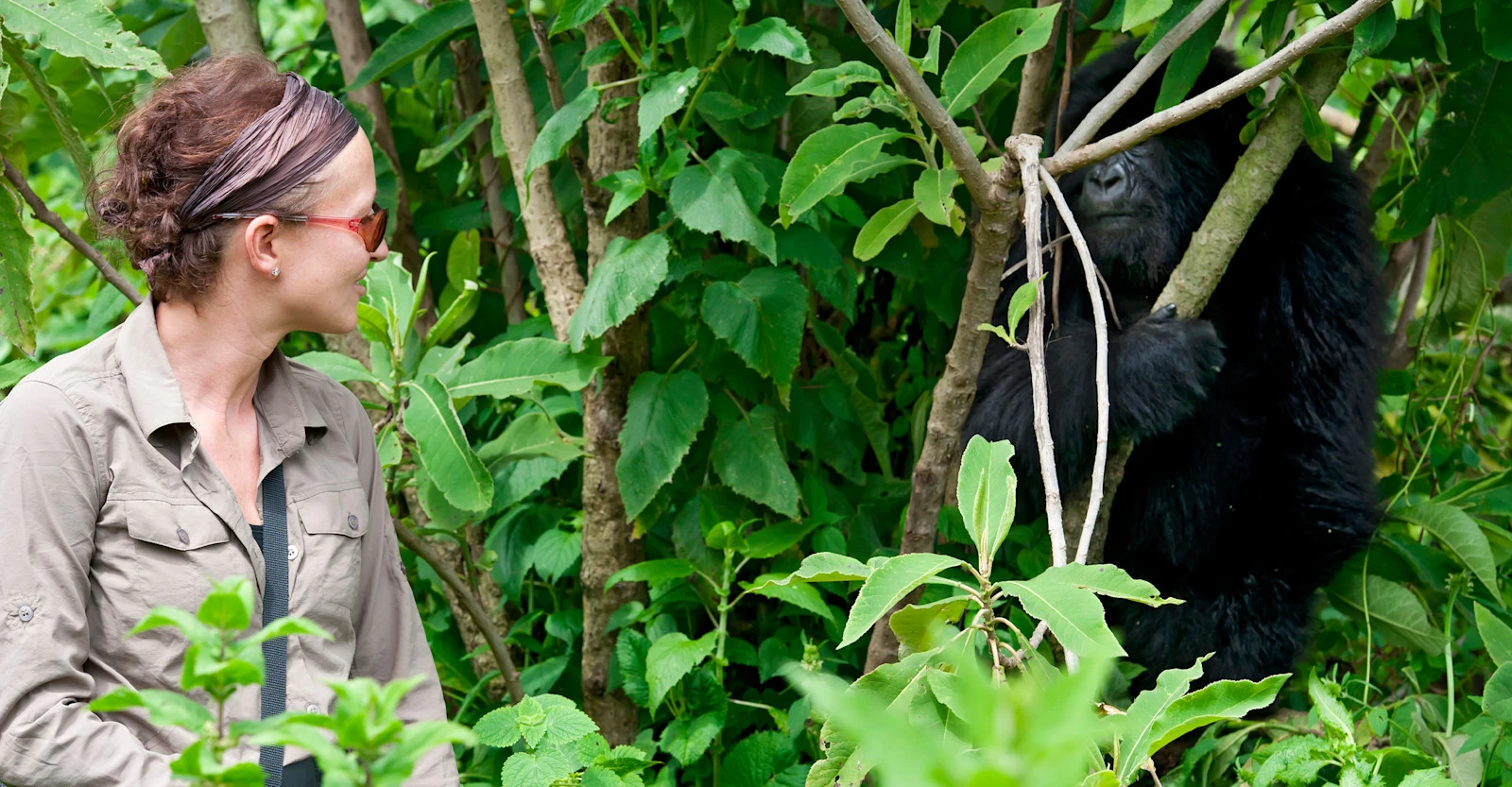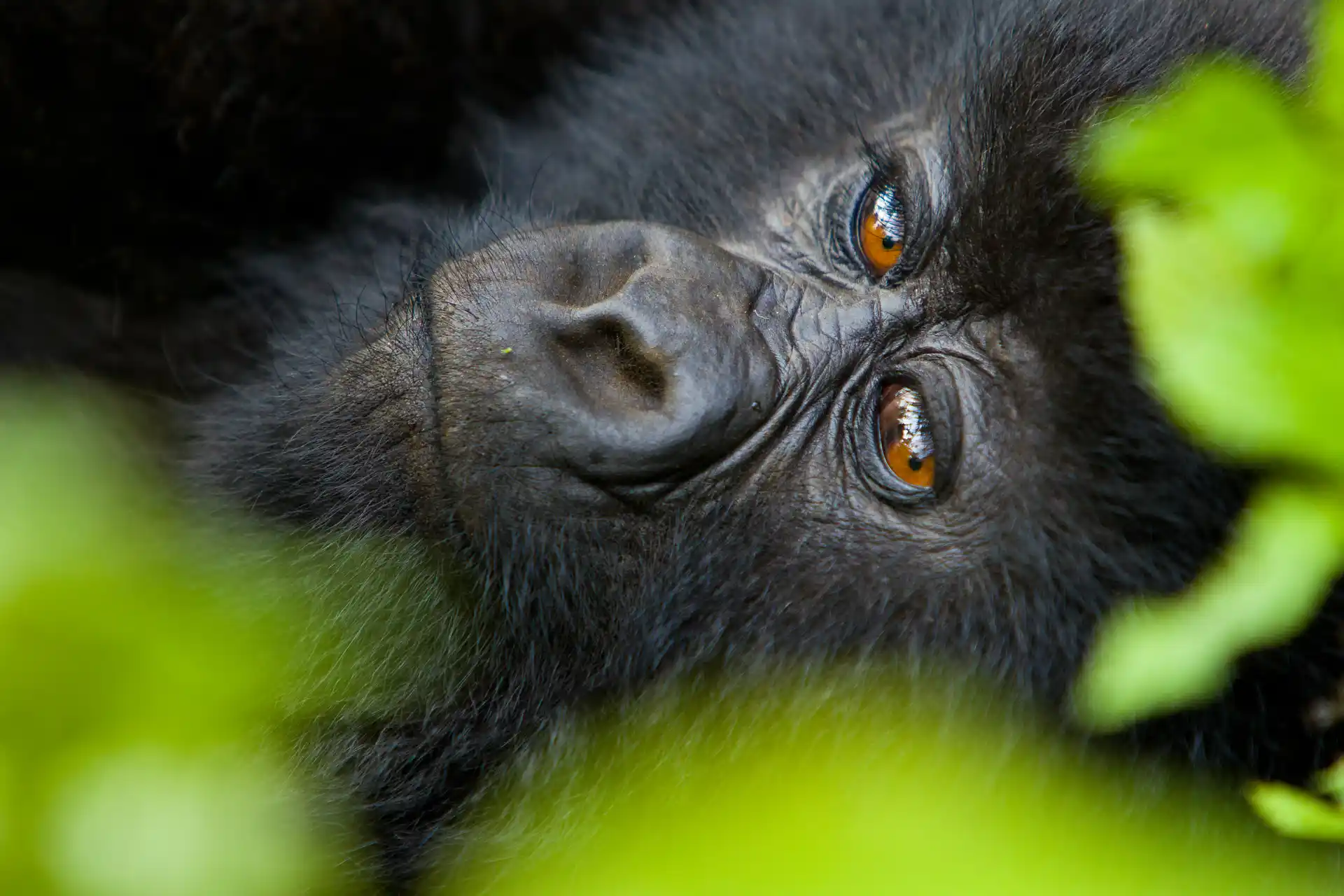Serengeti To Bwindi
If you dream of seeing Africa’s most famous animals up close, there is no better journey than one that takes you from Tanzania’s Serengeti National Park to Uganda’s Bwindi Impenetrable Forest. These two places are very different in landscape and wildlife, but together they offer one of the most powerful and exciting travel experiences in the world.
In the Serengeti, you’ll find open golden grasslands stretching as far as the eye can see. Here, lions, elephants, and herds of wildebeest roam freely, and during certain times of the year, the Great Migration fills the land with sound and movement. In Bwindi, the world becomes quiet and green. The thick forest is home to rare mountain gorillas—gentle, intelligent animals who share nearly all of our DNA. Seeing them in the wild, just a few metres away, is something travellers never forget. This journey takes you from the open savannahs of Tanzania to the misty rainforests of Uganda. Though these places are far apart, it is surprisingly easy to visit both in one trip.
When Is the Best Time to Go?
The best time to visit both Serengeti and Bwindi is during the dry seasons, when the weather is more pleasant and travel is smoother. From June to September, East Africa enjoys long dry months. In the Serengeti, this is when wildlife is easiest to spot, and the Great Migration is often at its most dramatic as the herds cross rivers filled with crocodiles. In Bwindi, the forest trails are less muddy and the chances of a good gorilla sighting are very high.
There is also a shorter dry season between December and February. This is another good time to travel, though the weather may be a little more humid in some areas. No matter when you go, it’s important to check the season for gorilla permits and migration patterns before you book.
How Do You Travel Between Serengeti and Bwindi?
Even though the Serengeti is in Tanzania and Bwindi is in Uganda, flying makes the journey fairly simple. After your safari in the Serengeti, you can drive or take a flight to Kilimanjaro or Arusha. From there, you will catch a connecting flight to Entebbe, Uganda’s main airport. Once you arrive in Entebbe, you can take a domestic flight to Kisoro, which are small airstrip near Bwindi. A short drive from Kisoro takes you to Orugano Bwindi Lodge, conveniently situated at the park’s edge.
This fly-in route significantly reduces travel time and offers a comfortable, scenic transition between destinations. While it is possible to travel overland, the journey can take up to 9 hours or more and is best suited for those on an extended road trip or with prior experience navigating remote regions of East Africa.
What Is Gorilla Trekking Like in Bwindi?
Gorilla trekking is a magical and emotional experience. You begin early in the morning with a small group of travellers and a local guide. Before you set off, you will be given a safety briefing and then guided into the forest to find a family of wild mountain gorillas. The trek can take anywhere from one to six hours depending on where the gorillas are that day.
Once your group reaches the gorillas, you will spend about one hour watching them from a safe distance. You might see them eating, playing, resting, or caring for their babies. They are peaceful and powerful creatures, and seeing them in the wild is a moment that stays with you forever.
To take part in gorilla trekking, you must buy a gorilla permit. In Uganda, the cost is currently 800 US dollars per person. The permit helps fund conservation and supports local communities who live near the forest. You do not need to be super fit, but the trek can be steep, slippery, and humid. Hiring a local porter is highly recommended. Not only will they help carry your backpack, but your payment gives someone in the community meaningful work.
What Makes Bwindi So Special?
Bwindi Impenetrable National Park is one of the most important homes for mountain gorillas in the world. Nearly half of all remaining wild gorillas live in this beautiful rainforest. The forest itself is ancient and full of life. You’ll see colourful birds, butterflies, and perhaps other monkeys along the trail. What makes Bwindi even more special is its connection to the people who live nearby. Many local communities are involved in conservation and tourism. You can visit traditional villages, explore local markets, or take guided walks to learn about their way of life. There are different sectors in Bwindi where gorilla trekking happens, such as Buhoma, Rushaga, and Ruhija. Each area has its own unique atmosphere and gorilla families. Accommodation options range from simple guesthouses to high-end eco-lodges, so you can choose what fits your style and budget.
What to Expect on Safari in Serengeti
The Serengeti is one of Africa’s most famous safari parks, and for good reason. Here, you can drive across open plains filled with animals that most people have only seen in books or on television.
Depending on the time of year, you may witness the Great Migration—a massive movement of over a million wildebeest, zebras, and gazelles as they follow the rains. Along the way, predators like lions and crocodiles follow them, creating dramatic wildlife scenes. But even outside the migration season, the Serengeti is rich with wildlife. You’ll likely see elephants, giraffes, buffaloes, hippos, and if you’re lucky, a leopard lounging in a tree. Most travellers explore the Serengeti by staying in lodges or tented camps and joining guided game drives in the early morning and late afternoon. These drives are safe, exciting, and give you the best chances of spotting animals.
How Much Will It Cost?
The cost of this journey can vary depending on your style of travel, but it is possible to enjoy this trip even on a moderate budget. The gorilla permit in Uganda is 800 dollars. Accommodation in both Bwindi and Serengeti can range from basic guesthouses at around 100 dollars per night to luxury lodges over 1,000 dollars. Park fees in Tanzania cost between 70 and 80 dollars per day. Domestic flights between countries and local airstrips can add to the cost, but they save you time and make the trip easier. By choosing local operators, mid-range accommodation, and travelling during the shoulder season (like May or November), you can reduce your costs without missing out on the magic.
Responsible Travel
When you visit the Serengeti and Bwindi, you’re not just seeing animals—you’re helping protect them. In Bwindi, the money from your gorilla permit supports forest rangers, gorilla tracking teams, and community projects. In the Serengeti, park fees help protect wild animals and create jobs for local people. Travelling responsibly means choosing operators who care about nature, respecting wildlife rules, and supporting local communities through your visit.
The Journey of a Lifetime
A trip from the Serengeti to Bwindi is more than just a holiday. It’s a journey that takes you from golden grasslands to misty jungle, from lions on the hunt to gorillas in the trees. It’s a chance to connect deeply with nature, to slow down, to feel awe, and to leave with a heart full of unforgettable memories. If you are ready to see the wildest side of Africa—this is the journey for you.





